Ricardo Bofill Taller de Arquitectura designs a lecture hall in Morocco with a deep green auditorium at its centre
✕
The Université Mohammed VI Polytechnique (UM6P) in Ben Guerir, Morocco, is a relatively new institution—the private research university only began awarding degrees less than a decade ago. But UM6P is no stranger to Ricardo Bofill Taller de Arquitectura (RBTA), the Barcelona-based studio that the eponymous architect led until his death from Covid-19 in 2022. In 2011, the firm beat out OMA and Zaha Hadid Architects and others in a competition to master plan and design the roughly 135-acre campus, and for the past 13 years, RBTA, now led by Bofill’s two sons, has worked diligently to bring that project to completion. (Much of it is already finished.)
UM6P, which currently enrolls about 5,000 students, continues to grow and has even begun building satellite campuses, including one in the Rabat-Salé metropolitan area near the capital that, appropriately, offers degrees in social sciences, economics, and humanities. There, the RBTA has been equally as diligent, pursuing a similar master planning strategy based on axial relationships, walkable covered streets, and public squares. This fall, the campus’s Centre de Congrès will open its doors, an academic lecture hall large enough to host conferences and meetings.
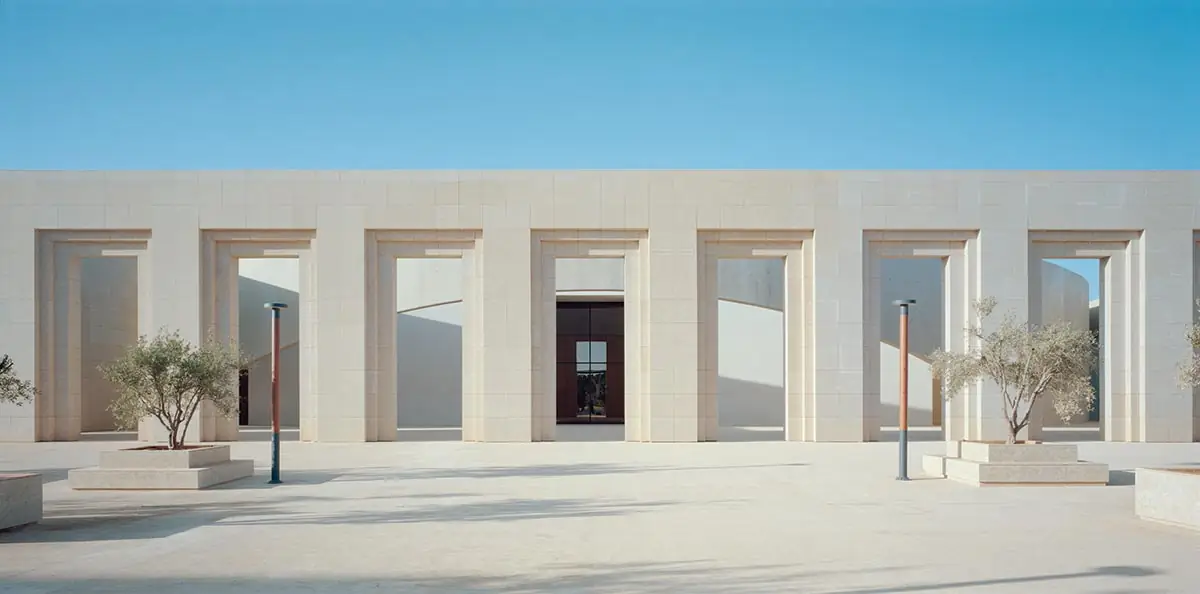
1
Behind a colonnade (1) sits a monumental cylinder with arched openings (2). Photos © Gregori Civera, click to enlarge.
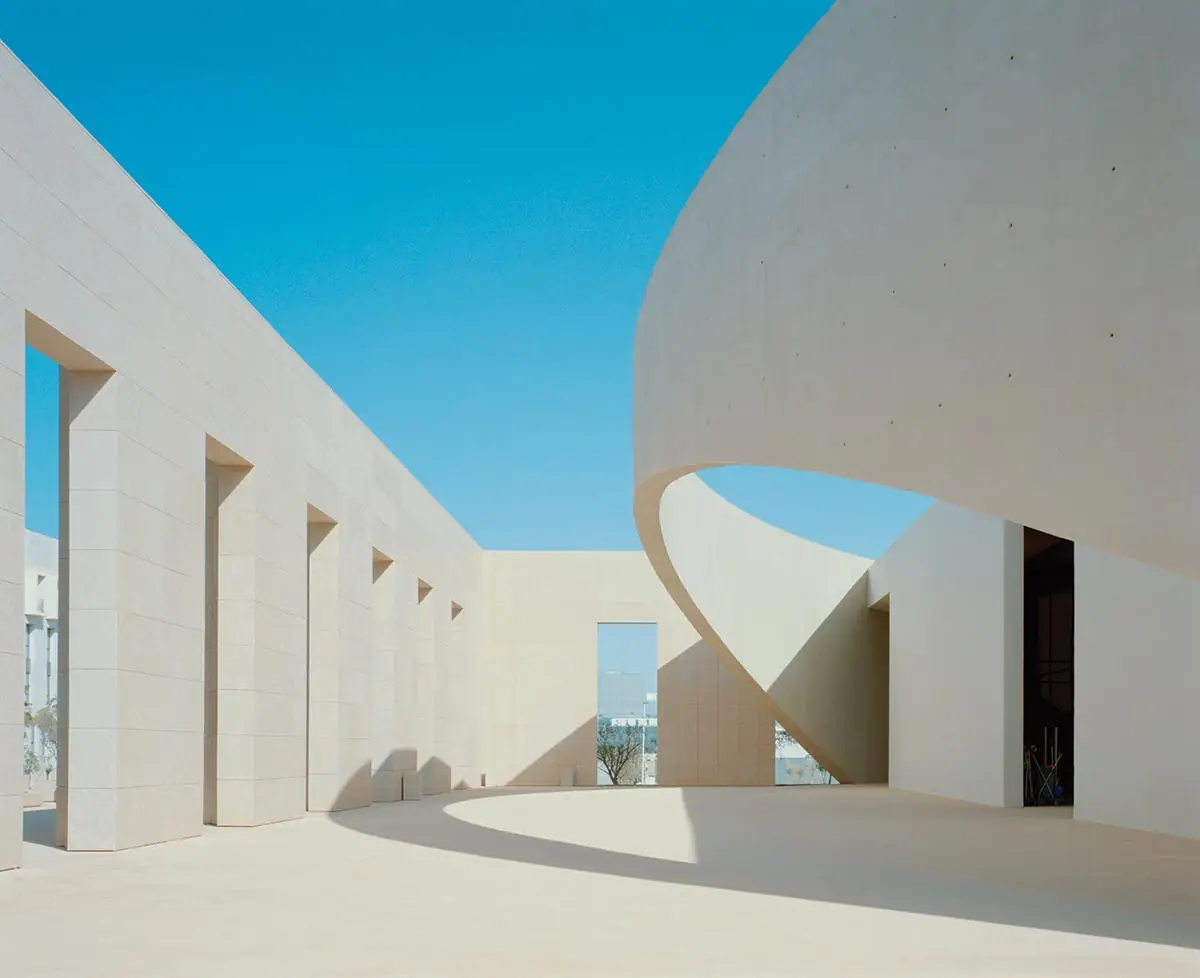
2
“It was important for us not to be too nostalgic about the vernacular, because that can lead to a bit of pastiche,” says Pablo Bofill. “In Morocco, there is always an internal architecture – maybe you first go through a small door, then there is a courtyard, then there is another door, and so on,” he explains of the existing structure and the attention the team at the Centre de Congrès paid to geometry and sequence. Accordingly, behind layers of concentric spaces lies the project’s hidden gem: an emerald green lecture hall lit by an upward-facing dome of white plaster that gives the space a dramatic flair.
The procession begins on an esplanade of potted trees that connects the Centre de Congrès to the rest of the UM6P Rabat-Salé campus. A columnar wall clad in beige local limestone and punctuated by rectangular openings with cantilevers delimits the building’s perimeter. This threshold encloses first a courtyard and then a monumental drum made of cast-in-place concrete with four broad arches around its base. Within this cylindrical volume, an entrance hall and staggered blocks (containing seminar rooms), interspersed with light wells, enclose the 1,500-seat, monochromatic sanctuary of education. On the other side, in the space between the drum and the outer wall, the architects placed a café with ample seating (and views of an olive grove), an exhibition space, and a 300-seat diamond-shaped hall—also entirely green.
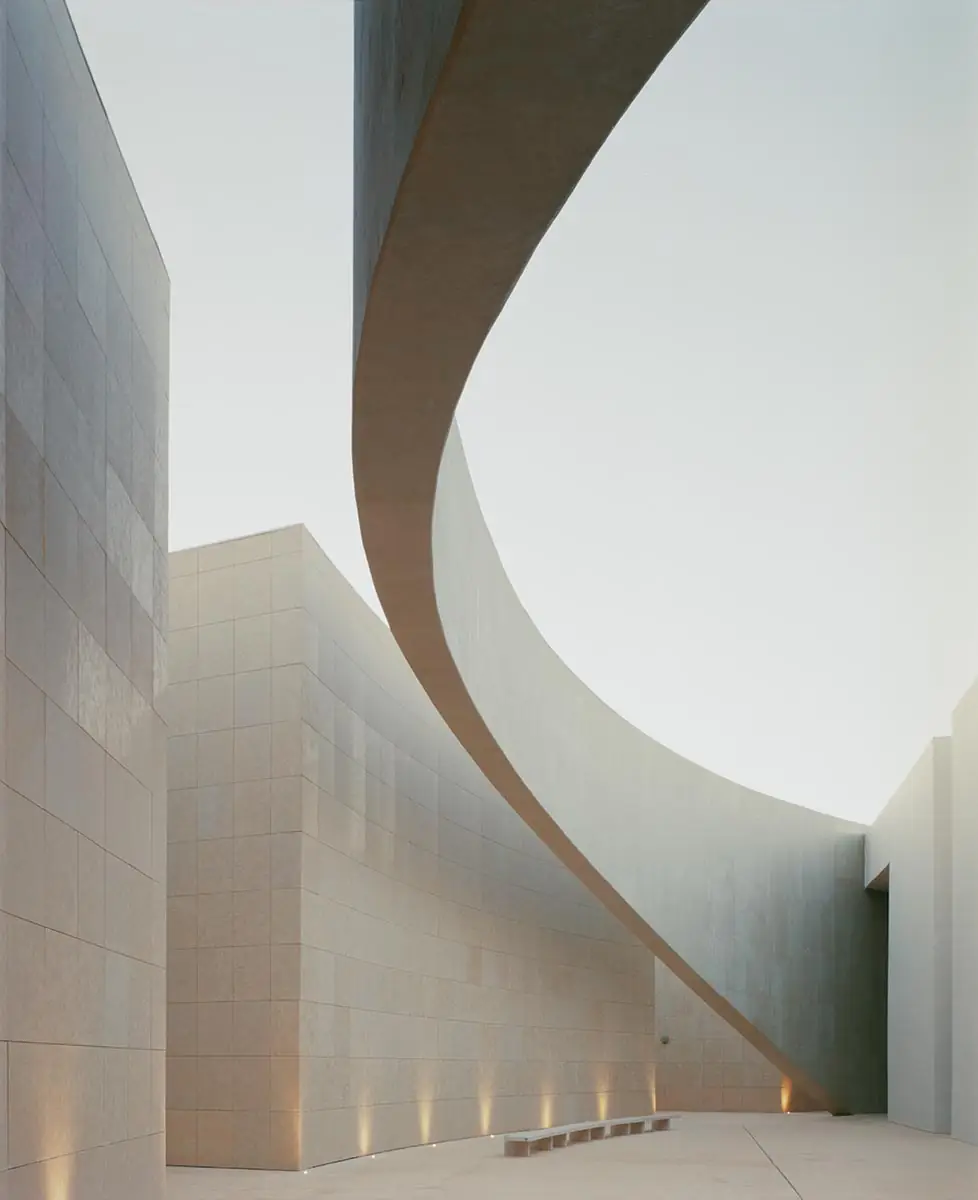
The inner drum is partially open to the sky, allowing students to walk under distinctive, soaring arches. Photo © Gregori Civera
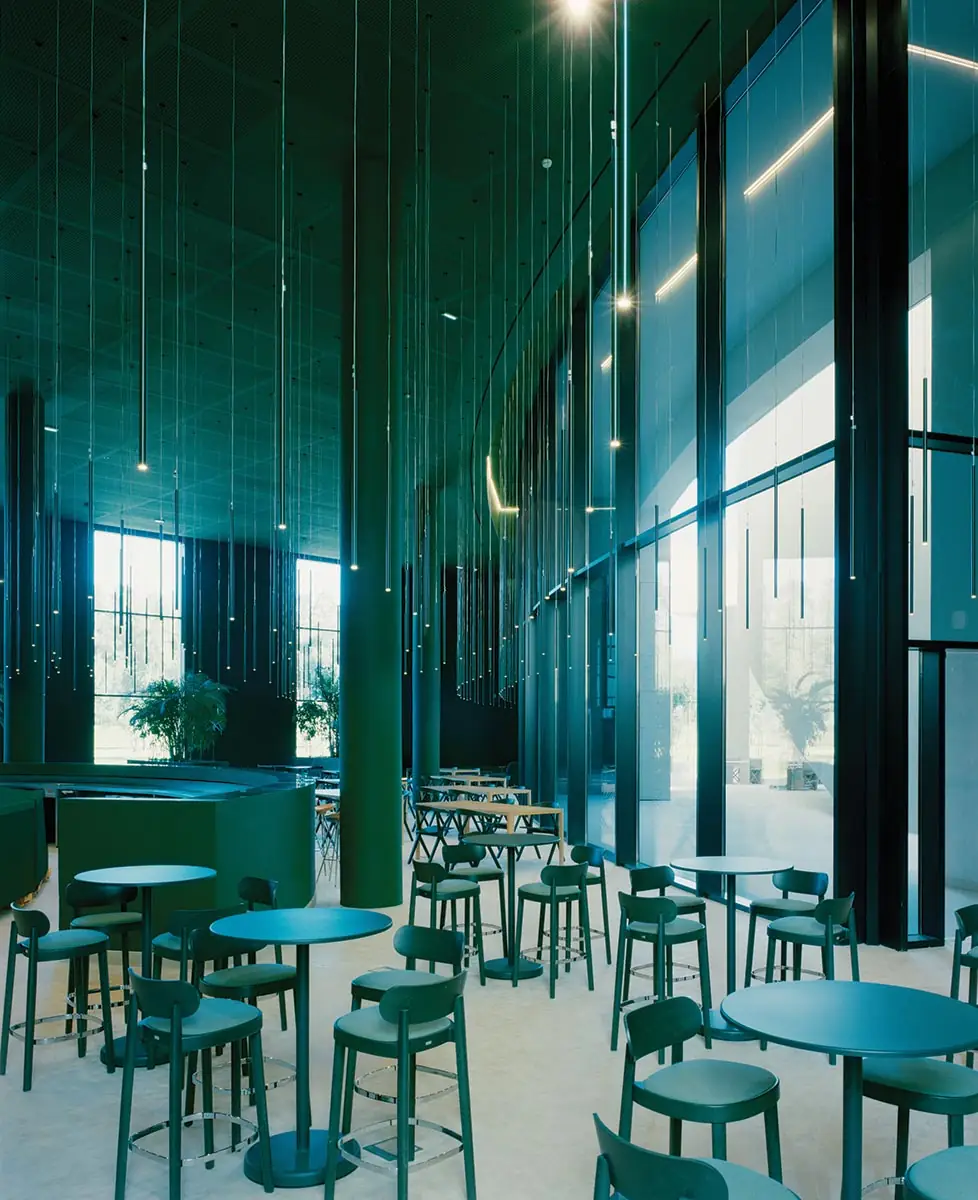
Like the auditorium, the café is decorated entirely in green. Photo © Gregori Civera
The Catalan studio has enlivened its architecture with intense colours to great effect – think of the deep midnight blue of the Castillo de Kafka and the reds and indigos of La Muralla Roja, which were inspired by the kasbahs of the Maghreb. “It’s part of our DNA and a strategy we often consider,” says Bofill, holding up a palette of RBTA-preferred hues. “For us, a space feels more powerful when it has one colour rather than a patchwork – it helps people identify a special place in their mind.” Green also has a cultural meaning in this context: its association with paradise and purity in Islam, the pentagram of the Moroccan national flag and the cellular Tiles that decorate important mosques across the country.
“Sometimes in Morocco it’s best to get things done quickly – work and construction are happening almost simultaneously. That’s always been a challenge,” admits Bofill. But despite everything, there is a certain cinematic quality, remarkable for a company whose work has repeatedly attracted location scouts for films such as ” Brazil (1985) and television shows including Westworld (2016–22) or inspired stage design, as in Squid Game (2021).
For Bofill, however, the project is about much more than just the architecture. UM6P was created with the aim of providing quality education to students from across the continent. “It’s about being part of the transformation of a place,” he says, adding that it has become increasingly difficult for students in the Arabic- and French-speaking Maghreb to obtain visas to study in France. “Architecture is an excuse to be able to progress.” And while that may be true, the Centre de Congrès is sure to make even those who don’t study there green with envy.
Click on the plan to enlarge
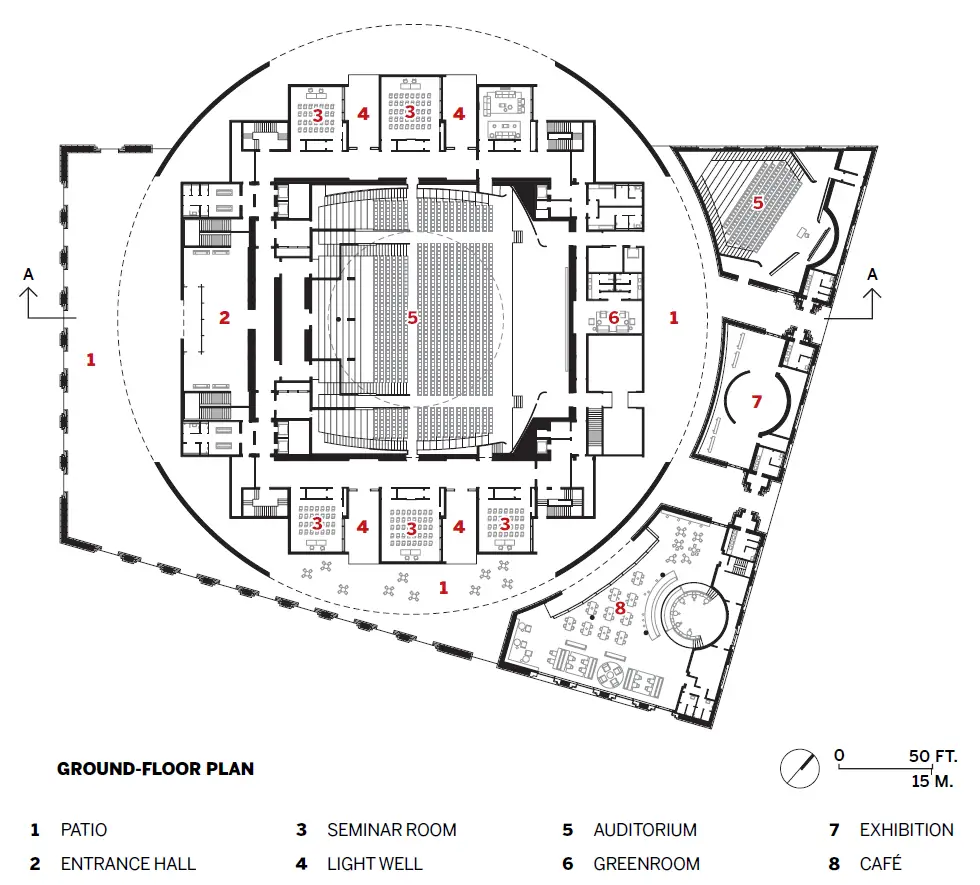
Click on the section to enlarge

Credits
Architect:
Ricardo Bofill Taller de Arquitectura – Pablo Bofill, CEO; Ricardo E. Bofill Maggiora Vergano, President; Hernán Cortés, design director
Associate Architect:
Melehi Haitam Architects
Engineers:
Sogea (structure); Sepsi (security/FP); Axians (AV); Cegelec (electrics)
Advisor:
Peutz (acoustics); Royth (facades); Signes (signage); Poliprograma (program); 380-750 nm (lighting)
General contractor:
Sogea, Cegelec
Customers:
OCP, Université Mohammed VI Polytechnique
Size:
117,400 square meters
Cost:
Held back
Completion date:
September 2023
Sources
Glazing:
Astiglass
Versions:
Radici Pietro Industries & Brands (carpet); BD Barcelona Design (furniture)
Lighting:
Bega

